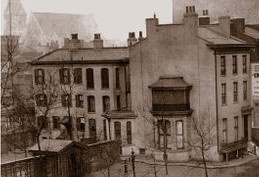Exploring Public Memory
2020-06-16 • Heidi Kolk

The Campbell House, near downtown St. Louis.
As a cultural historian who began academic life as a visual artist and poet, I have long gravitated to cross-disciplinary study. I work primarily on 19th- and 20th-century subjects, tracing the persistence of established narratives, visual imaginaries, and materialities across time, and seeking to understand their power as a kind of invisible or unacknowledged cultural patrimony.
In recent years, my research has explored the politics and practices of public memory, especially where they intersect with matters of race and space, heritage and public culture, and the history of American cities. My book, Taking Possession: The Politics of Memory in a St. Louis Town House, encompasses many of these, focusing on the Campbell House, an 1850s mansion near downtown St. Louis that became the unlikely exception to a much-lamented pattern of destruction pursued in the name of urban renewal.
What has interested me most about this fetishized historic site is how exaggerated the physical and imaginative work of its salvage has been—and also how keeping it intact has been a palliative for devastating social and material changes that have occurred during the 20th century, and a broader anxiety of decline.
My goal has been to understand the processes by which memory is materialized not only through keeping, caretaking, and acts of consecration, but through their seeming opposite: acts of forgetting, erasure, and even symbolic (and sometimes literal) violence. The book argues that heritage and humiliation, owning and disowning, possession and dispossession, are intimately connected—they are dark twins.